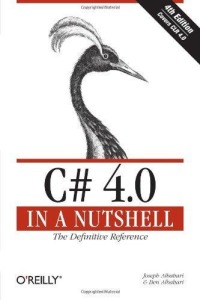
Liknande böcker
Beginning Visual Basic 2010
Bok av Thearon. Willis
This book is designed to teach you how to write useful programs in Visual Basic 2010 as quickly and easily as possible.
There are two kinds of beginners for whom this book is ideal:
You're a beginner to programming and you've chosen Visual Basic 2010 as the place to start. That's a great choice! Visual Basic 2010 is not only easy to learn, it's also fun to use and very powerful.
You can program in another language but you're a beginner to .NET programming. Again, you've made a great choice! Whether you've come from Fortran or Visual Basic 6, you'll find that this book quickly gets you up to speed on what you need to know to get the most from Visual Basic 2010.
Visual Basic 2010 offers a great deal of functionality in both tools and language. No one book could ever cover Visual Basic 2010 in its entiretyyou would need a library of books. What this book aims to do is to get you started as quickly and easily as possible. It shows you the roadmap, so to speak, of what there is and where to go. Once we've taught you the basics of creating working applications (creating the windows and controls, how your code should handle unexpected events, what object-oriented programming is, how to use it in your applications, and so on) well show you some of the areas you might want to try your hand at next:
Chapters 1 through 9 provide an introduction to Visual Studio 2010 and Windows programming. These chapters will help you install the Visual Studio 2010 IDE you'll use to create Visual Basic 2010 applications and learn your way around the interface. You'll be introduced to the .NET Framework and the CLR (Common Language Runtime). You'll learn to use variables, data types, comments, methods, and control software flow with the If statement and loops. You'll work with data in arrays, enumerations, constants, structures, ArrayLists, Collections, and tables. Chapter 6 provides an introduction to XAML and Windows Presentation Foundation (WPF) programming. XAML and WPF are the most recent addition to how VB programmers create user interfaces for their applications. You'll also work with events, create toolbars, buttons, forms, display dialog boxes, and create menus.
Chapter 10 provides an introduction to application debugging and error handling.
Chapters 11 through 13 provide an introduction to object-oriented programming (OOP) and building objects. You'll use classes, learn about reusability, work with constructors and inheritance, and see .NET Framework classes and namespaces. Youll learn to work with OOP memory management, class libraries, you'll register assemblies, and see how to use third party class libraries.
Chapter 14 provides an introduction to creating Windows Forms user controls. While WPF user interfaces are newer, Windows forms are still in widespread use. You'll create and test controls and work with their properties.
Chapters 1...







